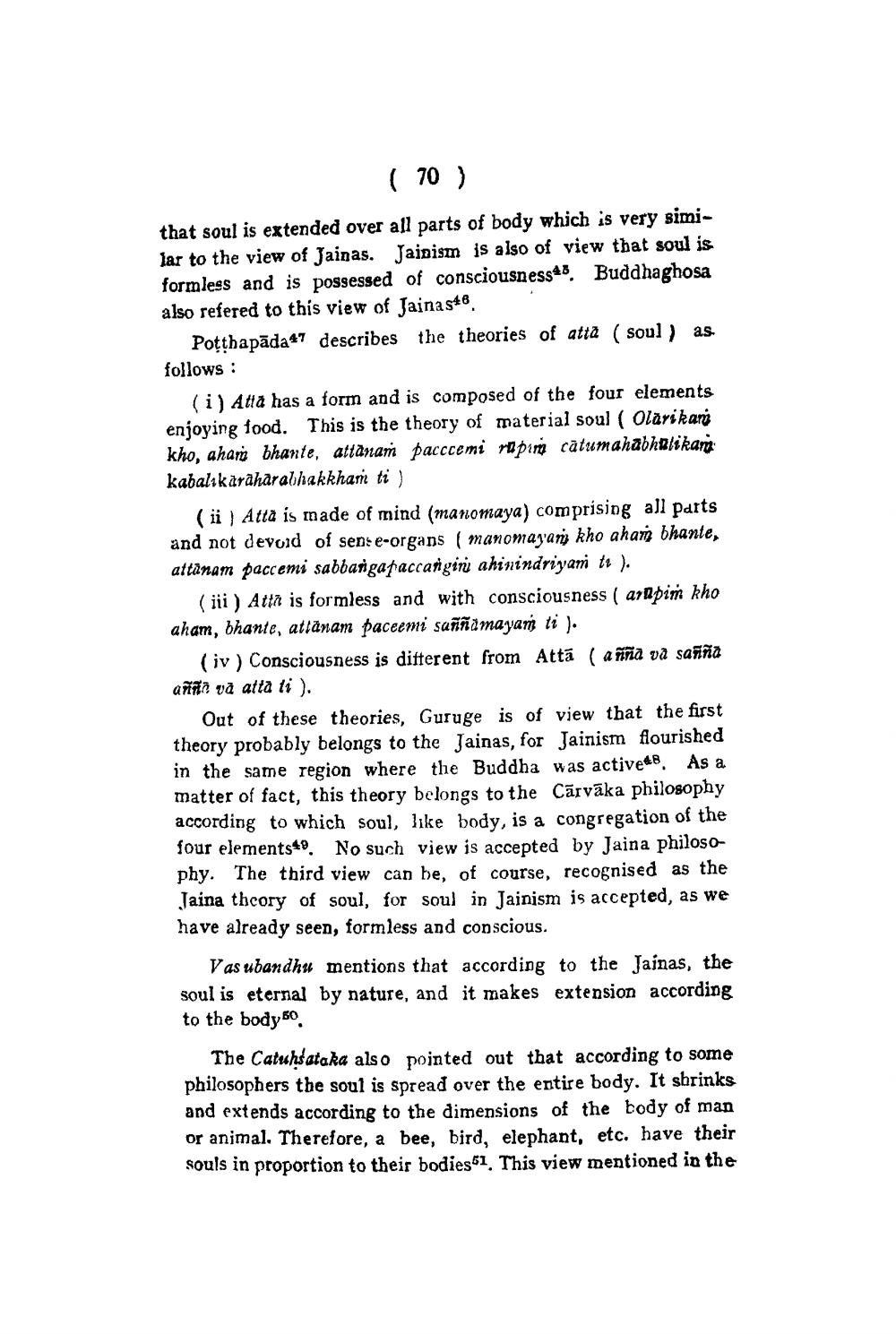________________
(
70
)
that soul is extended over all parts of body which is very similar to the view of Jainas. Jainism is also of view that soul is formless and is possessed of consciousness46 Buddhaghosa also refered to this view of Jaina 548
Potthapāda 47 describes the theories of atta (soul) as follows:
(i) Atta has a form and is composed of the four elements enjoying food. This is the theory of material soul ( Olarikari kho, aham bhante, attanam pacccemi rapim catumahabhalikara kabalıkäraharabhakkham ti )
(ii) Atta is made of mind (manomaya) comprising all parts and not devoid of sense-organs ( manomayan kho aham bhante, attanam paccemi sabbanigapaccangini ahinindriyan tt ).
(iii) Atta is formless and with consciousness ( arapin kho aham, bhante, atlånam paceemi saññamayan li ).
(iv) Consciousness is ditterent from Attá ( anna va safna đĩa và atta ti ).
Out of these theories, Guruge is of view that the first theory probably belongs to the Jainas, for Jainism flourished in the same region where the Buddha was active&. As a matter of fact, this theory belongs to the Cārvāka philosophy according to which soul, like body, is a congregation of the four elements49. No such view is accepted by Jaina philosophy. The third view can be, of course, recognised as the Jaina thcory of soul, for soul in Jainism is accepted, as we have already seen, formless and conscious.
Vas ubandhu mentions that according to the Jainas, the soul is eternal by nature, and it makes extension according to the body 50
The Catuhsataka also pointed out that according to some philosophers the soul is spread over the entire body. It shrinks and extends according to the dimensions of the body of man or animal. Therefore, a bee, bird, elephant, etc. have their souls in proportion to their bodies51. This view mentioned in the




